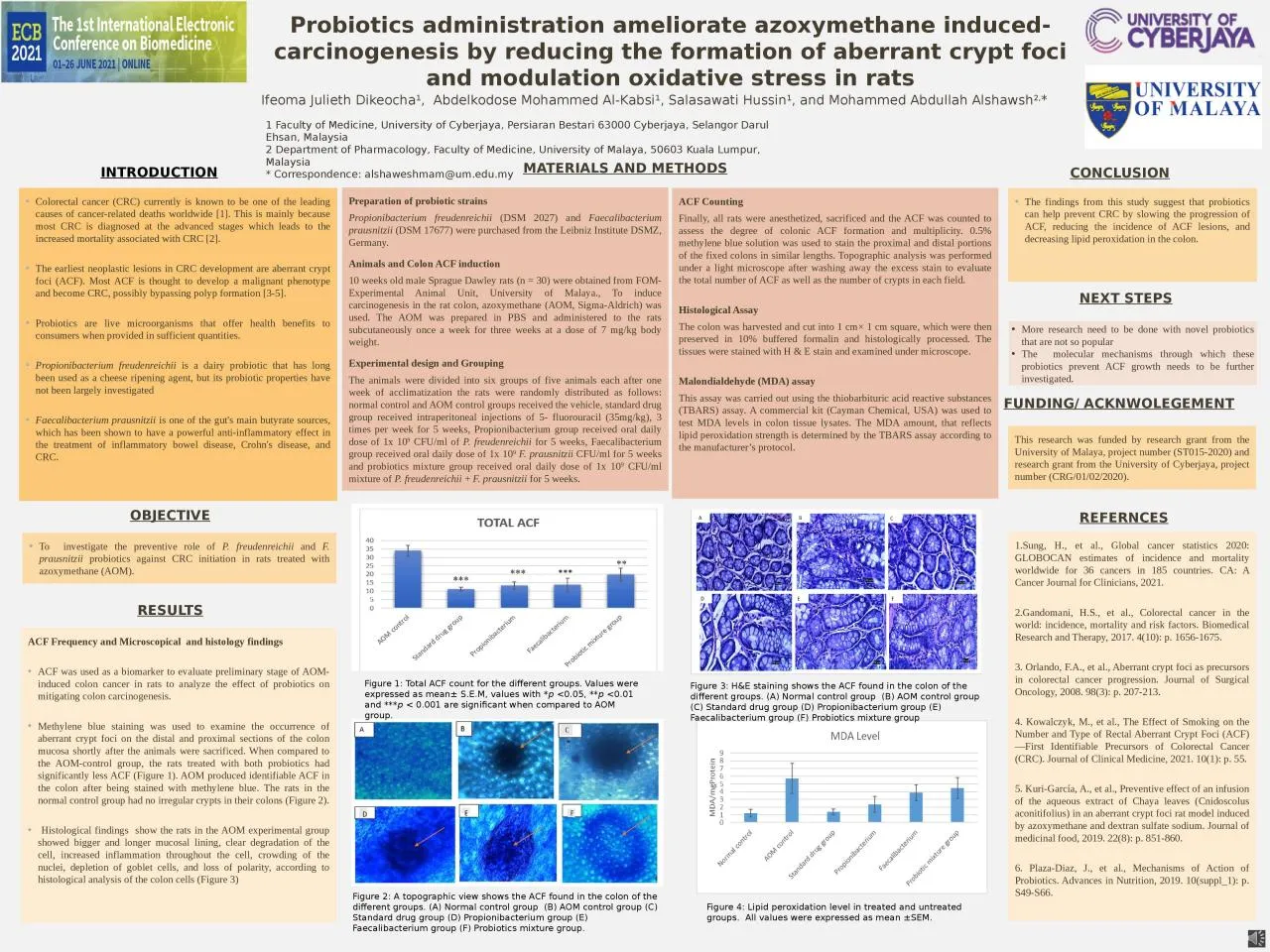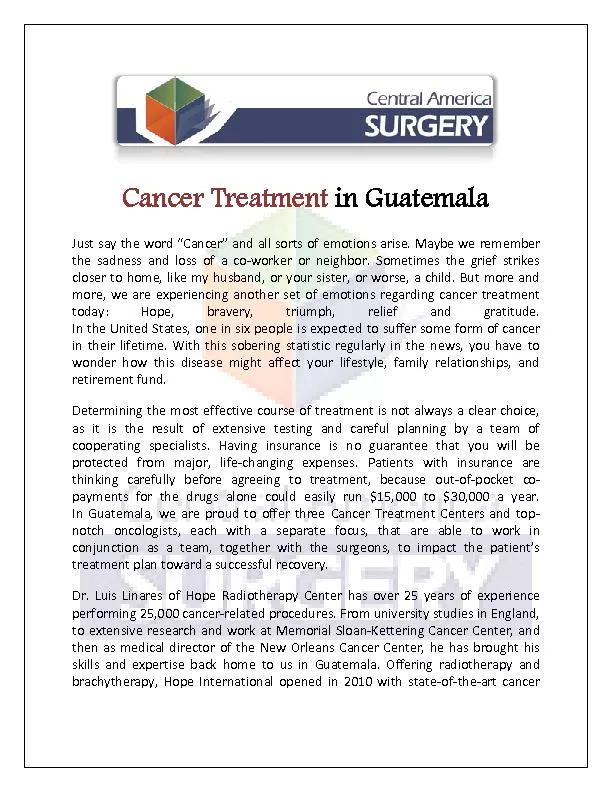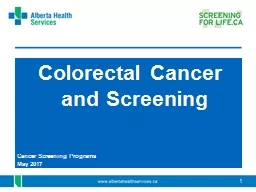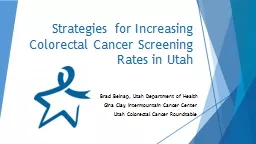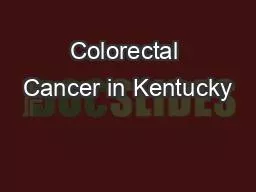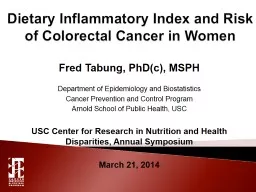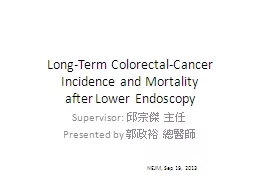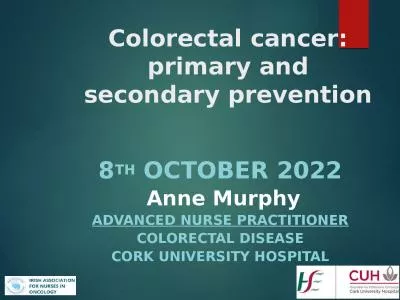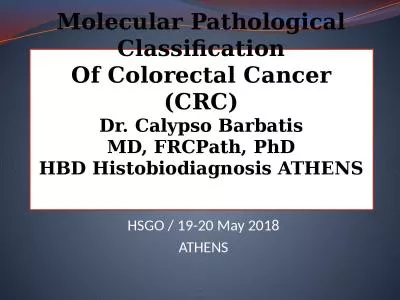PPT-Colorectal cancer (CRC) currently is known to be one of the leading causes of cancer-related
Author : williams | Published Date : 2022-02-15
The earliest neoplastic lesions in CRC development are aberrant crypt foci ACF Most ACF is thought to develop a malignant phenotype and become CRC possibly bypassing
Presentation Embed Code
Download Presentation
Download Presentation The PPT/PDF document "Colorectal cancer (CRC) currently is kno..." is the property of its rightful owner. Permission is granted to download and print the materials on this website for personal, non-commercial use only, and to display it on your personal computer provided you do not modify the materials and that you retain all copyright notices contained in the materials. By downloading content from our website, you accept the terms of this agreement.
Colorectal cancer (CRC) currently is known to be one of the leading causes of cancer-related: Transcript
Download Rules Of Document
"Colorectal cancer (CRC) currently is known to be one of the leading causes of cancer-related"The content belongs to its owner. You may download and print it for personal use, without modification, and keep all copyright notices. By downloading, you agree to these terms.
Related Documents

